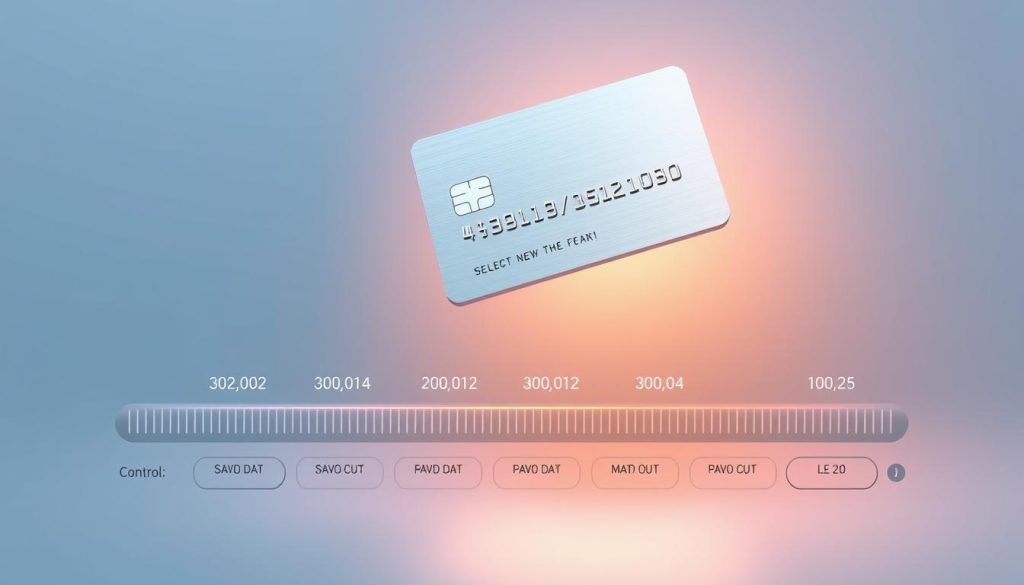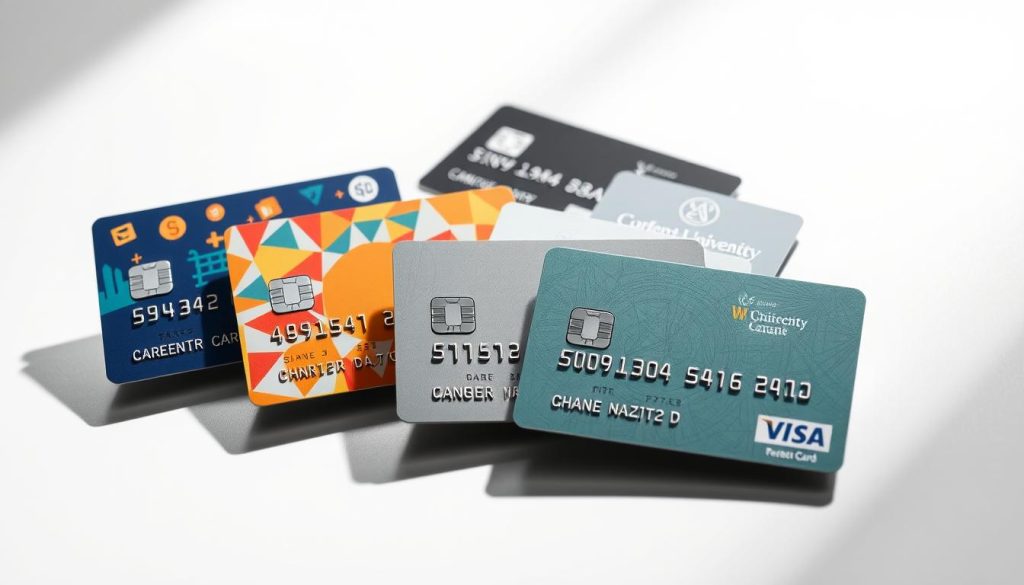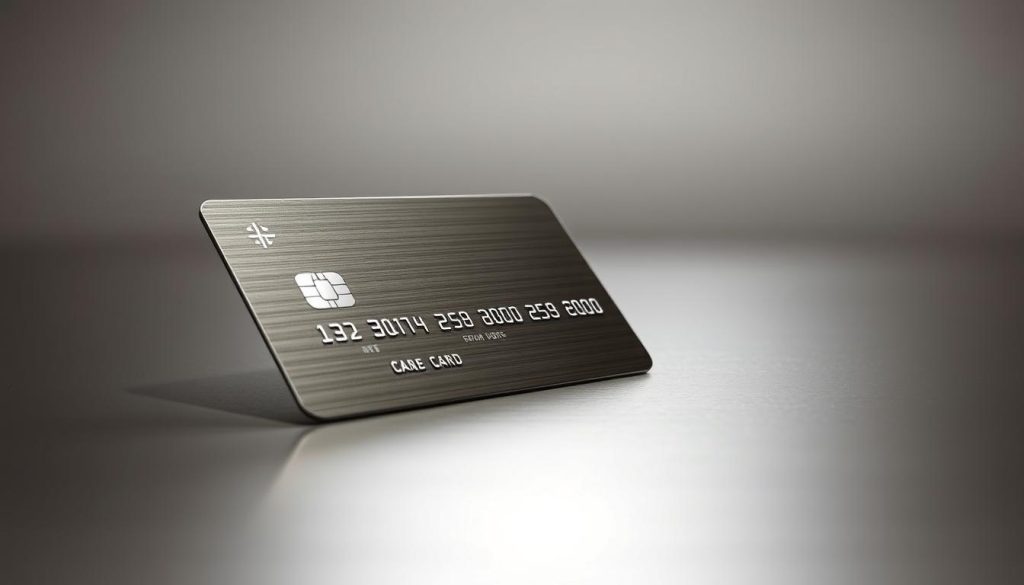The average American household has over $4,000 in credit card debt. It’s key to know how to manage these payments well. By using the right strategies, you can avoid high interest charges. This way, you can control your debt and save money.
Credit card debt can weigh heavily on families. Knowing how to pay off your cards can save you from high fees. By managing your debt, you can avoid extra charges and keep more money in your pocket.
Introduction to Credit Card Payment Strategies
Learning about credit card payment strategies is vital. It helps you avoid paying too much in interest and fees. By paying off your debt fast, you can save a lot of money over time.
Key Takeaways
- Understand the best credit card payment strategies to avoid interest charges and fees.
- Manage credit card debt effectively to avoid costly interest charges.
- Implement effective credit card payment strategies to take control of credit card debt.
- Avoid costly interest charges and fees by paying off credit card debt quickly.
- Use credit card payment strategies to save money in the long run.
- Effective credit card payment strategies can help individuals achieve financial stability.
Understanding Modern Credit Card Payment Strategies
Managing credit card debt well means knowing the real cost of carrying debt and how interest works. The Consumer Financial Protection Bureau found that credit card companies charge over $120 billion in interest and fees yearly. Understanding credit card debt and interest helps people make better payment choices and avoid costly errors.
The secret to avoiding high interest charges is to know how payment timing affects your debt. Payment timing is key because it decides how much interest you pay. Credit card companies often charge interest daily, leading to a lot of interest over time.
Some common fees on credit cards include:
- Late fees: charged when a payment is missed or late
- Balance transfer fees: charged when moving a balance to another card
- Foreign transaction fees: charged for purchases in foreign currencies
Knowing these fees and how interest works helps people make smart payment choices. This way, they can avoid building up too much credit card debt.
Smart Payment Timing for Maximum Benefits
When it comes to credit card payments, payment timing is key. It helps avoid interest charges and boosts benefits. A Federal Reserve report shows making multiple payments monthly can cut down on interest. This is great for those with big credit card balances.
To get the most from your credit card payments, try these tips:
- Make multiple payments a month to lower your daily balance and interest charges
- Pay more than the minimum to clear your debt faster and dodge interest
- Use credit card rewards and cashback by paying on time and keeping balances low
These strategies can improve your payment timing and credit card use. Always pay on time to avoid extra fees and interest. With some planning and discipline, you can save money and enjoy your credit card’s benefits.

Digital Tools Revolutionizing Credit Card Payments
Managing credit card payments has become easier with digital tools. A Pew Research Center survey found over 70% of adults in the U.S. use mobile banking apps. This shift helps people keep track of their payments, avoid late fees, and make smart financial choices.
Using digital tools makes credit card payments more convenient. They offer benefits like ease, accuracy, and security. Features like auto-payment and mobile apps ensure payments are always on time.
- Auto-payment features for recurring payments
- Mobile payment apps for real-time updates
- Budget tracking software to monitor expenses
These tools have changed how we handle credit card payments. They help avoid extra fees and interest. By using them, people can better manage their finances and get the most from their credit cards.
Advanced Credit Card Payment Strategies for Zero Interest
To get zero interest on credit card payments, knowing the different zero-interest promotions is key. Credit card companies have various offers like balance transfer deals and introductory APRs. These can save you money on interest. By using these offers, you can pay off your debt more efficiently.
The Credit Card Accountability Responsibility and Disclosure Act makes sure companies share the details of their zero-interest deals. This info is vital for making smart choices about your payments. By understanding the fine print, you can avoid costly errors and plan to pay off your debt.
Some important strategies for zero interest include:
- Understanding the terms and conditions of zero-interest promotions
- Implementing a plan for debt elimination
- Taking advantage of balance transfer offers and introductory APRs
- Using credit card payment strategies to reduce interest charges
By following these strategies, you can lower your debt and get zero interest on your credit card payments. Remember, credit card payment strategies, zero interest, and debt elimination are all connected. Knowing these concepts helps you make better financial decisions.

Breaking the Minimum Payment Cycle
To break the minimum payment cycle, you need to know the real cost of credit card debt. Paying only the minimum keeps you in debt for years. The solution is to make a debt elimination plan that fits your life.
A study by the National Foundation for Credit Counseling shows that making a plan helps pay off debt. Breaking the cycle saves money on interest and speeds up reaching your financial goals. Understanding the minimum payment cycle is key to getting out of debt.
Calculate Your True Payment Requirements
First, figure out how much you should pay each month to clear your debt quickly. Use a debt repayment calculator to find out. This helps you make a plan that suits your budget and emergency fund.
Creating a Debt Elimination Timeline
After finding out how much to pay, make a timeline for paying off your debt. Include the monthly payment, interest rate, and how long it will take. A clear timeline keeps you focused and motivated to reach your goals, even while saving for emergencies.
By following these steps and making a debt plan, you can escape the minimum payment cycle and achieve financial stability. Always keep your emergency fund in mind while paying off debt. This way, you’re ready for any unexpected costs during your debt repayment journey.
Conclusion: Making Your Credit Card Work for You
By using the credit card payment strategies from this article, you can control your financial future. You can avoid high interest and fees. This helps you build financial stability.
It’s important to use your credit cards wisely. Check your credit reports often and avoid common mistakes. This way, you can use your cards to improve your financial situation. With careful planning, you can make the most of your credit cards.


